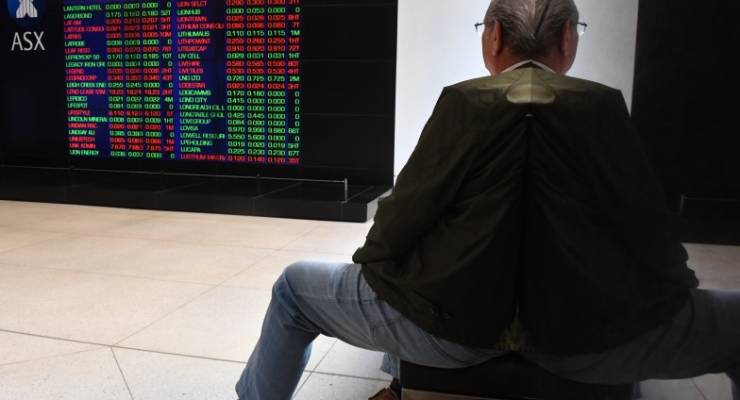
Did you know that we are going through a “credit squeeze”? No one knew up to Monday morning when dear Robert Gottliebsen told us with yet another Henny Penny “the sky is falling” prognostication in The Australian. Known in the media and markets as “Whispering Bob Gottliebsen” for slightly breathless style, he told readers of the Oz that “this credit squeeze is without precedent”.
“One of the reasons the Australian stockmarket underperforms the US is that the impact of the current credit squeeze is developing momentum. It’s a credit squeeze without any Australian precedent,” Gottliebsen opined loftily, but very wrongly.
Feeling the squeeze
Well, you could have knocked us down with a feather. The last time we looked, Reserve Bank data showed private credit in this country was growing at 4.5% in the year to August, with housing credit rising by 5.4% and business credit by 3.8%. A credit squeeze is when the amount of available credit shrinks. The Financial Times defines it as “when a government tries to reduce money supply and moderate the speed of economic growth by imposing restrictions on bank credit, typically through higher interest rates”.
But that is misleading because, as we saw in the Great Financial Crisis and Great Depression, credit squeezes can also develop when liquidity dries up because noone is willing to lend to each other. In fact the squeeze in the GFC came when the Reserve Bank was the only organisation lending to banks and others (including the Federal Government). The RBA had slashed its key cash rate in the GFC, and at the moment is maintaining it at an all time low of 1.5% and has been doing so since August 2016.
In that time 600,000 or more jobs have been created, GDP has jumped to more than 3% a year, wages haven’t grown above 2.1% at best (and less for private sector workers) and inflation is running at 2%. That is not a credit squeeze.
Gottliebsen’s claim that “it’s a credit squeeze without any Australian precedent” has no foundation in fact — as the RBA data shows, lending is still happening across the economy, just not at previously high levels to property investors and people (and banks) looking to cut corners with interest-only loans.
Following precedent
His comment ignored other credit crunches or squeezes in this country besides the GFC, which was externally generated. For example there is the RBA rate rise driven credit crunch of the early 1990s — Paul Keating’s “recession we had to have” which brought down the State Bank of Victoria, Pyramid Building Society, the State Bank of South Australia, Trico and almost caused Westpac to collapse.
Now that was a credit squeeze almost “without precedent in Australia”. But there is a further precedent — three of note, in fact.
In 1974 the inflation and rapid expansion of money supply and spending by the Whitlam government set off an enormous crunch that saw overnight money market rates surge to 20% which caught a number of banks short. In 1979, the Bank of Adelaide came near to collapse and was bailed out by the ANZ which launched a takeover offer with the support of the RBA. 1961 had one of the most famous credit squeezes of all (its when the phrase entered Australian every day life), after finance companies and retailers collapsed, unemployed soared and Menzies almost lost the 1961 election. That squeeze was caused by a mini-budget in November 1960 from federal treasurer Harold Holt, to try and curb runaway inflation and a balance of payments crisis.
This is not to mention, of course, the credit squeeze in the Great Depression — in a class of precedence all of its own.
Manufacturing hype
The reality is that Robert Gottliebsen has done this before. In October he had a ridiculous claim that we destroyed our manufacturing base in favour of a housing boom. It was a message that is familiar to his readers of The Australian:
“We need to face the fact that, like the US, we decided to abandon our manufacturing base and overcame the standard of living implications of that decision by heavy bank borrowing to fund a housing boom”, he wrote in the Oz.
His claim was neatly punctured by Reserve Bank deputy governor Guy Debelle, who pointed out in a speech on the labour market that the number of manufacturing jobs in the economy had returned to 2011 levels:
More recently, there has been a noteworthy increase in manufacturing employment. This is a result of export demand for high-quality food and beverage products, demand for manufactured goods from mining-related activity as well as the high levels of residential and infrastructure construction. This more recent pick-up in manufacturing employment takes it back to its level around 2011.
Private credit figures from the Reserve Bank for September today will no doubt again disprove Gottliebsen’s claims, and similar comments from brokers, analysts, people in property and others in the media.








I have been through credit squeezes. This isn’t one!
Whispering Bob, like Bosses’ Boy Ross Greenwood and the eternal Eeyore McCrann are so consistently wrong with every utterance that it is astonishing that anyone still feeds them.